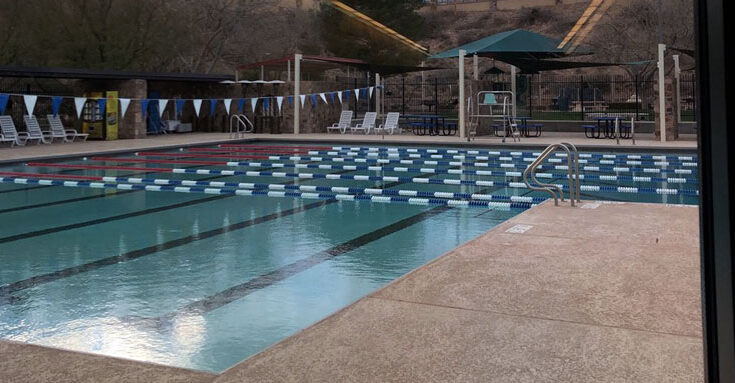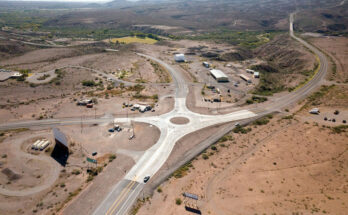By Jon Johnson
MORENCI – A 6-year-old girl is in recovery after needing cardiopulmonary resuscitation (CPR) and the use of an automated external defibrillator (AED) machine during a near-drowning incident at the Morenci Community Center pool on Saturday.
First responders were dispatched to the community center at about 2:41 p.m. regarding a drowning. Upon arrival, a swimmer had removed the girl from the pool, and lifeguards had begun CPR and hooked up the AED machine. Video surveillance and other evidence at the scene suggest the child may have had a medical situation while swimming.
Paramedics took over primary care from the lifeguards and transported the child to Mt. Graham Regional Medical Center. She was reportedly flown to Phoenix Children’s Hospital for observation. An updated condition status was not readily available.
According to statements from witnesses and lifeguards, the child’s father was near the girl in the pool with another child. As the father walked away, he looked back to see his daughter under the water. When he noticed she wasn’t moving anymore, he grabbed her from underneath a lifeguard stand and pulled her up. The report states that three lifeguards were watching the pool at the time of the incident, each observing a section.
Another swimmer helped take the child out of the water, and the lifeguards alerted the staff and visitors of the situation through a series of whistle blows.
Greenlee County Sheriff Eric Ellison praised the quick action of the lifeguards and pool staff for saving the child.
“You know, they’re young, but they acted promptly and they were the ones that saved that little girl’s life,” Ellison said. “They conducted CPR. They did an outstanding job.’
Ellison also warned about the dangers of unsupervised swimming and encouraged continued diligence in watching children around water.
“Watch your children around water,” he said. “Don’t take your attention off for any moment, not even to look at your cell phone.”
Swimming Safety Tips
Provide close and constant attention to children you supervise in or near water.
- Swim in designated areas supervised by lifeguards. Always swim with a buddy; do not allow anyone to swim alone.
- Provide close and constant attention to the children you are supervising, even when a lifeguard is present, no matter how well the child can swim or how shallow the water is. Avoid distractions, including cell phones.
- Never leave a young child unattended near water, and do not trust a child’s life to another child; teach children to always ask permission to go near water.
- Designate a “water watcher” whenever in a group setting.
Take smart precautions and use layers of protection.
- Stay within an arm’s reach of any weak or inexperienced swimmer in the water.
- Young children or inexperienced swimmers should wear U.S. Coast Guard-approved life jackets around water, but they should not rely solely on them.
- Do not rely on water wings, swim rings, inflatable toys, or other items designed for water recreation to replace adult supervision.
- If you have a pool, secure it with appropriate barriers to prevent unsupervised access to the water.
- Many children who drown in home pools did so during non-swim times – when they weren’t expected to be in the water, including as the swimming activity was coming to an end, and everyone was thought to be out of the water.
- Children were often out of sight for less than 5 minutes and in the care of one or both parents.
Ensure that everyone in the family learns to swim well and what to do in a water emergency.
- If a child is missing, check the water first. Seconds count in preventing death or disability.
- Know how and when to call 9-1-1 or the local emergency number.
- Have appropriate equipment, such as reaching or throwing equipment, a cell phone, life jackets, and a first aid kit.
- Enroll in age-appropriate Red Cross water orientation and learn-to-swim courses.
- Enroll in Red Cross home pool safety, water safety, first aid, and CPR/AED courses to learn how to prevent and respond to emergencies.
*Source: American Red Cross











